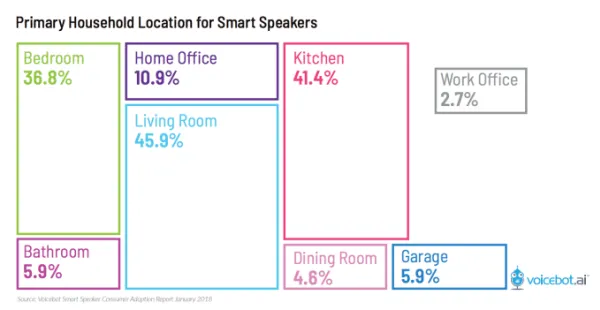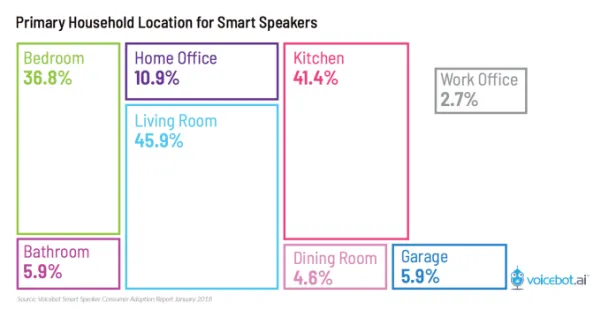How Artificial Intelligence Will Disrupt Speech Recognition
Blog: ProcessMaker Blog
Chatbots, personal assistants, and smart devices are not new to the public. Voice-powered devices have impacted our cell phones, computers, smartwatches, our cars, and even our houses with smart home security companies like Vivint. Today, speech recognition ranges from finance, human resources, marketing, crime, and even public transportation with the goal of cutting business costs, simplifying outdated processes, improving user experience (UX), and increasing overall efficiency. As technology advances in the areas of cloud computing, data science, and machine learning, speech recognition technology will only improve and change business models in increasingly competitive markets.
In this article, we will cover how artificial intelligence will disrupt speech recognition technology in the private domain and our everyday lives.
What is speech recognition?
According to TechTarget, “Speech recognition is the ability of a machine or program to identify words and phrases in spoken language and convert them to a machine-readable format.” Speech recognition efforts have been actively in place since the 1950s, but didn’t reach accepting natural speech until the late 1990s. Machine learning (ML) has provided the majority of speech recognition breakthroughs in this century. First captivating society was Apple’s Siri, the AI-powered digital assistant that humanized speech recognition up to that point. Apple pioneering the way led competing companies to take note and make versions of their own. Microsoft soon followed by launching Cortana and then Amazon with Alexa, birthing an entire industry marked by voice command.
Today, speech recognition technology is everywhere. Consumers and technologists alike realize the benefits of voice command, such as helping people with learning differences or impairments, along with reducing paperwork, time, and costs associated with business operations. Artificial intelligence has already begun to expedite the capabilities of voice command. Google Home and Amazon Echo are examples of commonly used voice command technologies that rely heavily on AI and speech recognition to meet user expectations and automate menial, everyday tasks within the home.
The rise of artificial intelligence
With significant strides in natural language and speech accuracy rates, speech recognition technology advancements has led to growing pressure for enterprises to build voice-enabled experiences that exceed user expectations. Tandem improvements in AI, cloud computing, and data science have enabled technology like voice command to advance at unprecedented speeds, shifting the way companies strategize their customer service tactics.
Major advances in machine learning enable conversational systems to better recognize speech itself and transform text into actual speech—two key elements in natural language processing (NLP). Conversational agents, like personal assistants, can then respond with human-like speed either through voice and text. This creates the demand for perfection in speech, prompting an industry move toward level five conversational AI from level three.
 Where smart speakers live in American homes. (Sourced by TechCrunch)
Where smart speakers live in American homes. (Sourced by TechCrunch)
AI has been impacting technology for years, but the public knowledge of AI — paired with the race to digital transformation among businesses — has accelerated the integration of AI into platforms, apps, and formation of entirely AI-built technologies. Apps like Google Maps use voice command to interact with drivers on a daily basis; Amazon Alexa has become a way of life for many Americans, especially now that “nearly one in five U.S. adults today have access to a smart speaker”, according to new research provided by Voicebot.ai. That number isn’t expecting to slow down either.
For enterprises, conservational AI is becoming widely adopted to slash business costs, improve customer service, and help businesses compete in an increasingly volatile landscape. Employees can save time with conversational AI to input data, pull reports, or perform other mundane tasks for work. In the 2019 Gartner CIO Survey, CIOs identified chatbots in particular as “the main AI-based application used in their enterprises.” If anything, this is a major indication that businesses are well into exploring the benefits of investing in voice command technology and AI-powered personal assistants.
As the market for conversational AI is starting to mature, companies are beginning to develop their own voice-powered technologies to assist driving customer experience strategies. Bank of America’s Erica and Capital One’s Eno are examples from leading banks that have built large teams to develop conversational AI, while other banks are relying on Google and Amazon to supply the OEM technology to build chatbots for the same purpose.
In the startup industry, competing companies like Lemonade are on the path to building autonomous enterprises relying on voice command to service customers. In the case of Lemonade, a user needing insurance signs up for coverage using a chatbot through an app with an appealing user interface. The whole process takes minutes, something unheard of in the insurance industry. This technology also plays on the growing trend of decentralization as the public demands to have greater control over technology and purchasing decisions.
 Consumer trends in using speech recognition in daily living. (Image sourced by The Startup)
Consumer trends in using speech recognition in daily living. (Image sourced by The Startup)
The future of speech recognition technology
According to Gartner, “70% of white-collar workers will interact with conversational platforms on a daily basis by 2022.” In short, voice recognition and artificial intelligence behind it is only going to get more sophisticated going forward. As the design and tech industries move toward total inclusivity, intentional AI is becoming imperative to serve a wider range of demographics, along with the demand for positive user experiences. In order to become more inclusive, technologists and scientists have begun to improve AI to recognize a diverse range of accents and dialects. The Harvard Business Review has released recent research that voice recognition “still has significant gender and racial biases,” solidifying the need for improvement to serve diverse populations without discrimination.
Even with holes in the technology, the industry is saturated with companies experimenting with integrating AI into their products and services with digital voice-assistants. One of the greatest industries impacted by technology is entertainment, with augmented reality games exploding onto the scene (hello, Pokémon Go). Virtual reality and biofeedback in voice-controlled video games are becoming more popular as well.
In addition to changes in the actual technology, the advertising industry will respond and have to adapt. Voice will be increasingly difficult to earn money from visual ads, making a revenue shift away from advertising to subscription models. Social media platforms like Snapchat and TikTok are already leveraging voice in their advertisements. For TikTok in particular, the app built and run entirely on AI to give a truly personalized user experience only fuels the power of advertisers to reach users. The art of storytelling will continue to be a force of branding in the new age of AI-powered speech recognition technology, enabling platforms to grow in size, power, and purchasing authority.
“The AI systems that we’re developing are going to have strengths and weaknesses. And people have strengths and weaknesses. So the biggest impact will come from figuring out the best way to have people and computers working well together,” says Murray Campbell of IBM, a distinguished researcher and architect of DeepBlue. Mindfully building AI into products and services will require patience and ethical best practices as business models continue to evolve moving forward.
Is your company embracing the many benefits of AI? Our enterprise business process management (BPM) platform integrates with AI-powered software like robotic process automation (RPA) to make businesses run more efficiently. Find out how our intelligent hybrid solution is helping to reduce time and increase business functionality at www.processmaker.com.
About ProcessMaker:
ProcessMaker is low-code business process management and workflow software. ProcessMaker makes it easy for business analysts to collaborate with IT to automate complex business processes connecting people and existing company systems. Headquartered in Durham, North Carolina in the United States, ProcessMaker has a partner network spread across 35 countries on five continents. Hundreds of commercial customers, including many Fortune 100 companies, rely on ProcessMaker to digitally transform their core business processes enabling faster decision making, improved compliance, and better performance.
The post How Artificial Intelligence Will Disrupt Speech Recognition appeared first on Open Source Workflow & BPM Blog.
